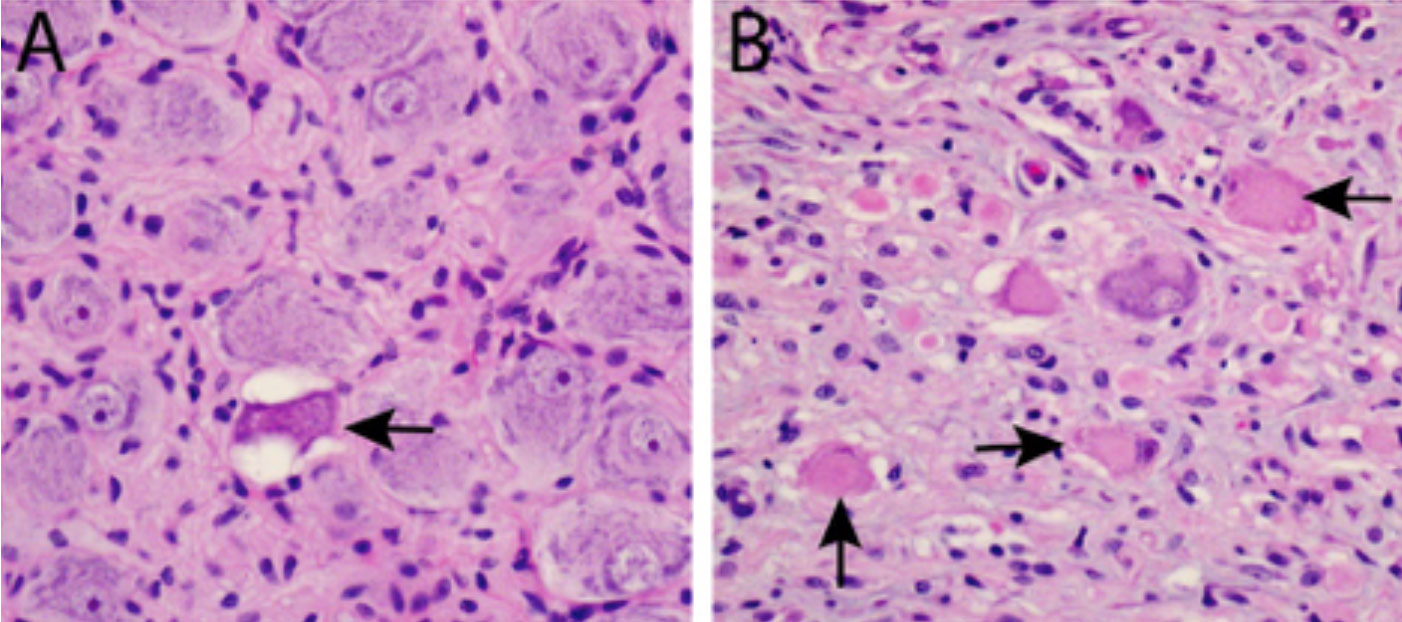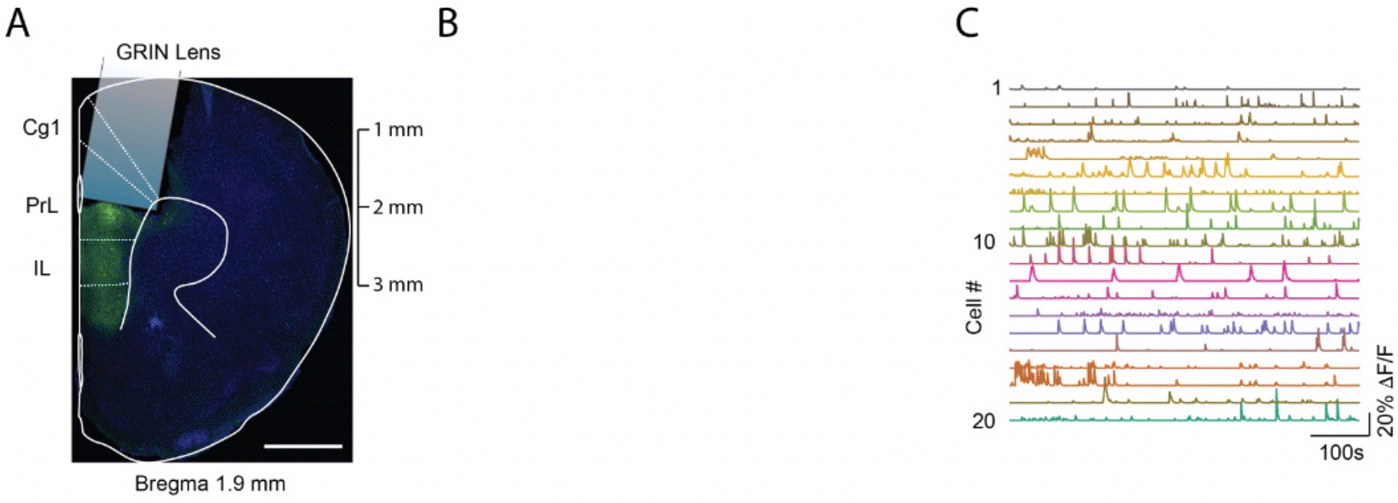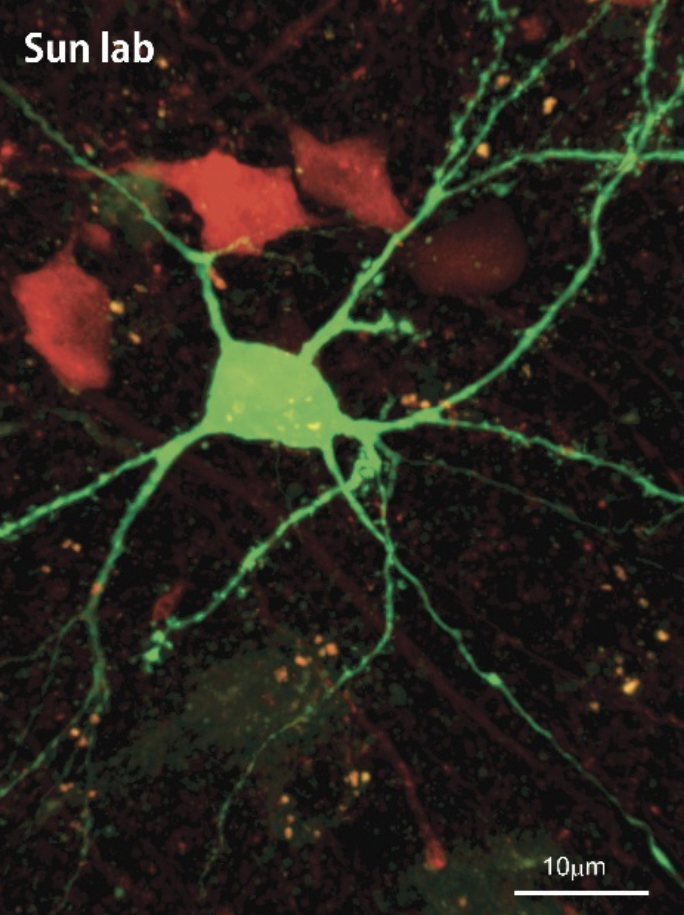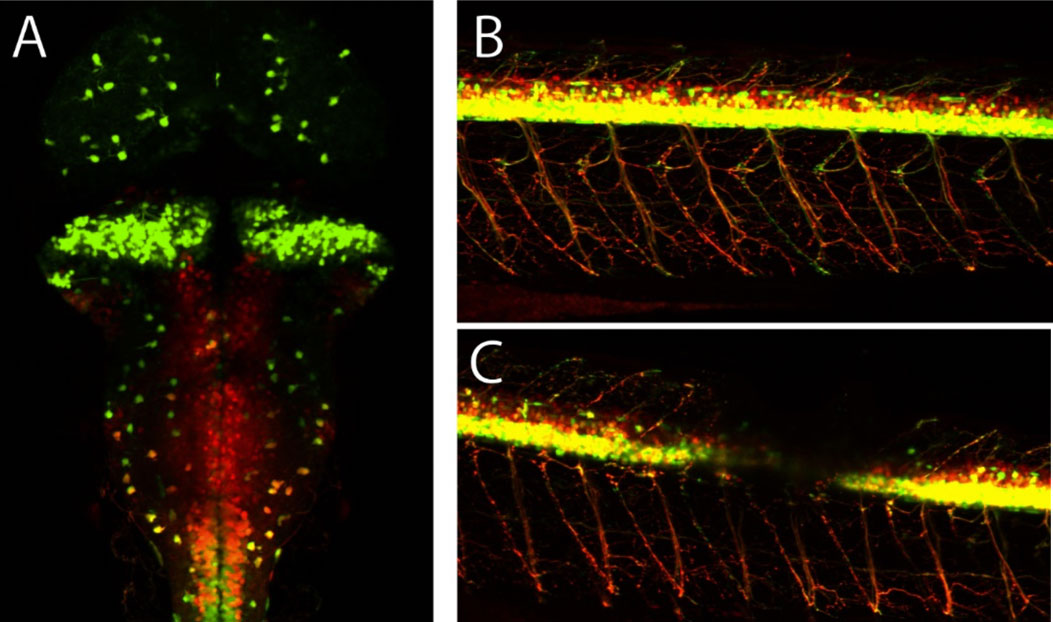

Neuroscience Graduate Program
Debbie Swierczek, Program Coordinator
School of Graduate Education
Knight Hall 247
Phone: 307-766-4128
Email: neuroscience@uwyo.edu
The University of Wyoming, Laramie offers graduate training in neuroscience leading to the Ph.D degree. The purpose is to prepare students for future careers as independent scientists, and educators. The program is interdepartmental. Faculty participants utilize diverse model species to study questions that utilize basic to translational research approaches: areas represented include neural development, behavior, learning and memory, sensory biology (link), addiction, regeneration, and neurodegeneration.


Neural activity in a Swamp swallow during singing and listening
Dr. Prather’s lab studies uses combined behavioral, anatomical, electrophysiological,
optogenetic and neuroimaging approaches to investigate how the brain enables us to
learn. Presently, his studies are focused on the neural mechanisms that underlie how
male birds learn and maintain their songs, and how female birds evaluate song quality
to choose their mates.

Neuroinflammation and neurodegeneration
Coeliac ganglia in two dogs that died from chronic (A) and acute (B) panautonomic
degeneration (spontaneous disease in pet animals). Dr. Fox’s laboratory studies mechanisms
of neurodegeneration. The main focus of his research is the role of persistent latent
CNS infections in promoting neuroinflammation and neurodegeneration in Huntington’s
disease and brain aging. This work is a collaboration with Dr. Gigley in the department
of molecular biology. As illustrated above, he also studies spontaneous dysautonomias
in domestic animals.

Neural encoding mechanisms in the prefrontal cortex
A mouse brain expressing the calcium indicator GCamp6f in medial prefrontal cortex
(mPFC) is implanted with GRIN lens and mounted with a miniScope. B. Calcium imaging
recorded through a miniScope from the mPFC of a freely behaving mouse. C. Representative
calcium traces from twenty regions of interest. Dr. Li’s lab studies how neural activity
carries information to guide behavior. The prefrontal cortex plays an essential role
in planning, reasoning, decision-making, and problem-solving. Disruptions in the PFC
neural circuitry are associated with behavioral abnormalities in a variety of brain
disorders. Dr. Li uses miniScope in-vivo calcium imaging in freely-behaving mice,
in combination with optogenetics and viral-genetic tools, to study neural circuit
mechanisms of depression, autism, and dementia.

Mechanisms of brain development
Photomicrograph of an intracellularly neurobiotin-filled glutamatergic neuron (green)
surrounded by genetically labeled GABAergic parvalbumin-expressing interneurons (red,
tdtomato) in a mouse barrel cortex layer IV. This 2D image was a maximum projection
image derived from a 3-D z-stack confocal image acquired by Dr. Xinjun Wang, a neuroscience
PhD graduate from Dr. Sun’s lab. The Sun lab combines mouse genetics, imaging and
electrophysiology to understand the mechanisms underlying development and related
developmental brain disorders.

Spinal cord injury in Zebra fish model
Zebrafish brain illustrating upper motor neurons (green) and oligodendrocyte precursor
cells (red). Spinal cord neuronal tracts (green) and migrating oligodendrocyte precursor
cells (red) and innervating motor neurons (red) in in normal zebrafish (B) and following
spinal trauma (C). Zebrafish have a remarkable regenerative capability making them
an excellent model to study CNS injury and neurodegeneration. Dr. Mruk's lab studies
the mechanisms of spinal cord regeneration following injury. We use a combination
of chemical probes, genetic manipulation, microscopy, and electrophysiology to understand
how locomotion returns and what genetics factors govern this process.
The doctoral neuroscience graduate program is now accepting applicants for a Fall 2023 start. We are seeking motivated individuals that are passionate about developing a career in the neurosciences as independent scientists and instructors. Neuroscience faculty have research programs in neurodevelopment, sensory biology, chronic pain, communication, addiction, spinal cord injury, epilepsy, neurodegeneration, decision making, and other areas. Please see “About the Program” for more information and contact the program director if there are questions about this opportunity.
Sensory Neurobiology Seminar Series Spring 2024
Year 2022
Allgood JA, Roballo KCS, Bridger RD, Bushman JS. 2022. Effect of graft source and orientation on regeneration of ablated branch points in peripheral nerves. Frontiers in Neuroscience. Accepted for publication 10/26/2022
Barbera G, Jun R, Zhang Y, Liang B, Li Y and Lin DT. 2022. A miniature fluorescence microscope for multi‑plane imaging. Scientific Reports 12: 16686. Doi:10.1038/s41598-022-21022-9
Bittner GD, Bushman JS, Ghergherehchi CL, Roballo KCS, Shorts JT, Smith TA. Typical and atypical properties of peripheral nerve allografts enable novel strategies to repair segmental-loss injuries. J Neuroinflammation. 2022 Feb 28;19(1):60. doi: 10.1186/s12974-022-02395-0.
Bloomstom NA, Zaharas K, Lawley K, Fenn T, Person E, Huber H, Zhang Z, Prather JF. 2022. Exploring links from sensory perception to movement and behavioral motivation in the caudal nidopalllium of female songbirds. Journal of Comparative Neurology https://doi.org/10.1002/cne.25305
Bruno JR, Udoh UG, Landen JG, Osborn PO, Asher CJ, Hunt JE, Pratt KG. 2022. A circadian-dependent preference for light displayed by Xenopus tadpoles is modulated by serotonin. iScience doi.org/10.1016/j.isci.2022.105375.
Fujii T, Coulter, A, Lawley KS, Prather JF, Okanoya K. 2022. Song preference in female and juvenile songbirds: proximate and ultimate questions. Frontiers in Physiology. 13:876205. doi: 10.3389/fphys.2022.876205
Jun R, Zhang W, Beacher NJ, Zhang Y, Li Y, Lin DT. 2022. Dysbindin-1, BDNF, and GABAergic transmission in schizophrenia. Frontiers in Psychiatry 13:876749. doi: 10.3389/fpsyt.2022.876749.
Lawley KS, Fenn* T, Person* E, Huber* H, Zaharas* K, Smith* P, Coulter A, Prather JF. (in press) Auditory processing neurons influence song evaluation and strength of mate preference in female songbirds. In press at Frontiers in Neural Circuits.
Liang B, Thapa R, Zhang G, Moffitt C, Zhang Y, Zhang L, Johnston A, Ruby HP, Barbera G, Wong PC, Zhang Z, Lin DT, Li Y. 2022. Aberrant Neural Activity in Prefrontal Pyramidal Neurons Lacking TDP-43 Precedes Neuron Loss. Progress in Neurobiology 215: 112297. Doi: 10.1016/j.pneurobio.2022.102297.
Liang B, Zhang L, Zhang Y, Werner C, Denman A, Li Y, Chen R, Gerfen C, Barbera G, and Lin DT. 2022. Striatal direct and indirect pathway neurons encode distinct elements in accelerating rotarod motor skill learning. iScience 25(5):104245. doi: 10.1016/j.isci.2022.104245.
Machado NLS, Todd WD, Kaur S, Saper CB. (2022) Median preoptic GABA and
glutamate neurons exert differential control over sleep behavior. Current Biology
32(9):2011-2021.e3.
Williams RE, Mruk K. (2022) Aquatic Freshwater Vertebrate Models of Epilepsy Pathology: Past Discoveries and Future Directions for Therapeutic Discovery. Int J Mol Sci. 23(15):8608. doi: 10.3390/ijms23158608.
Wupu O, Allgood JA, Van Sandt R, Burns DT, Bushman JS. 2022. Sexual dimorphism in lesion size and sensorimotor responses following spinal cord injury. Front. Neurol. doi.org/10.3389/fneur.2022.92579
Neuroscience Graduate Program
Debbie Swierczek, Program Coordinator
School of Graduate Education
Knight Hall 247
Phone: 307-766-4128
Email: neuroscience@uwyo.edu